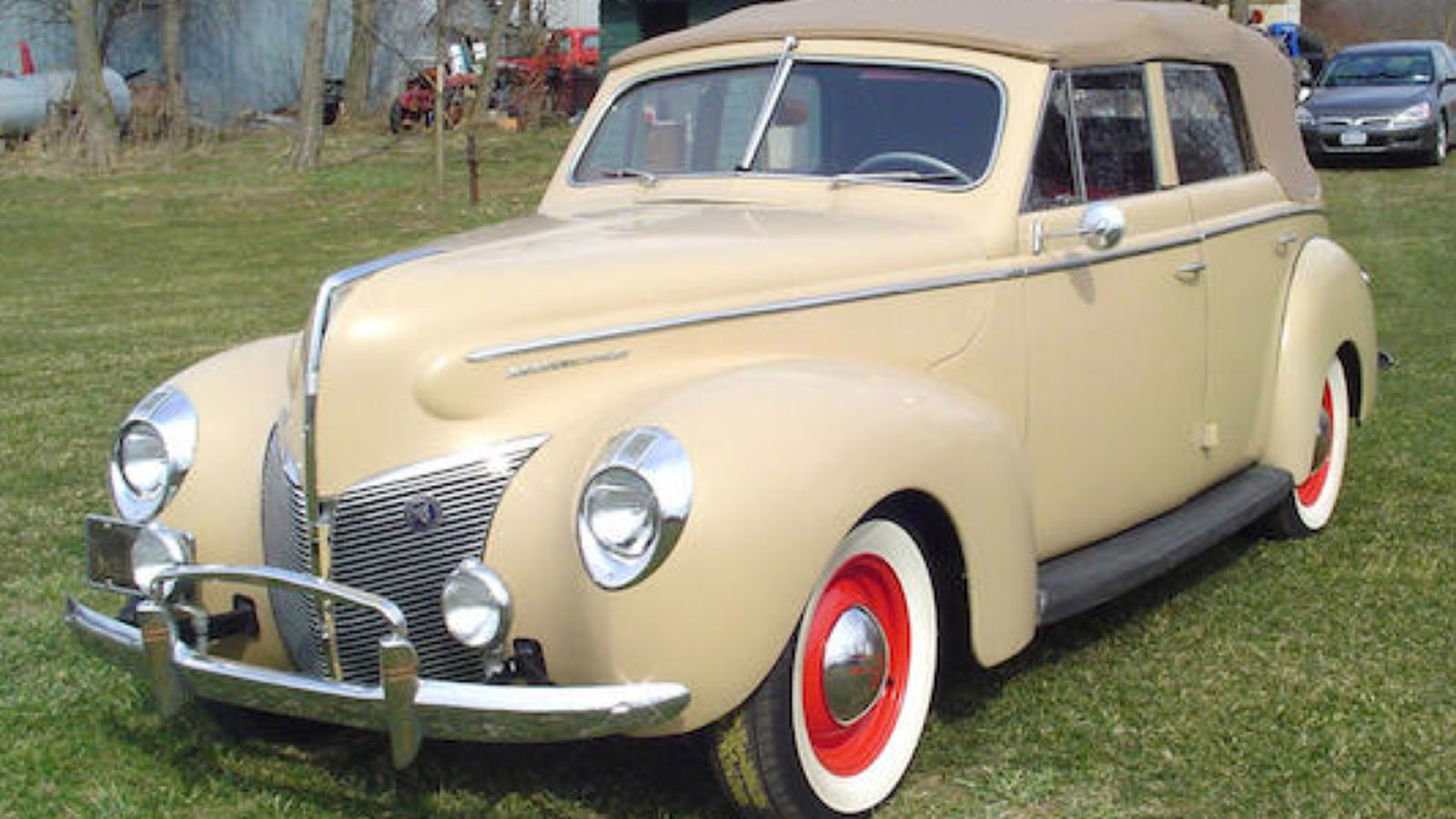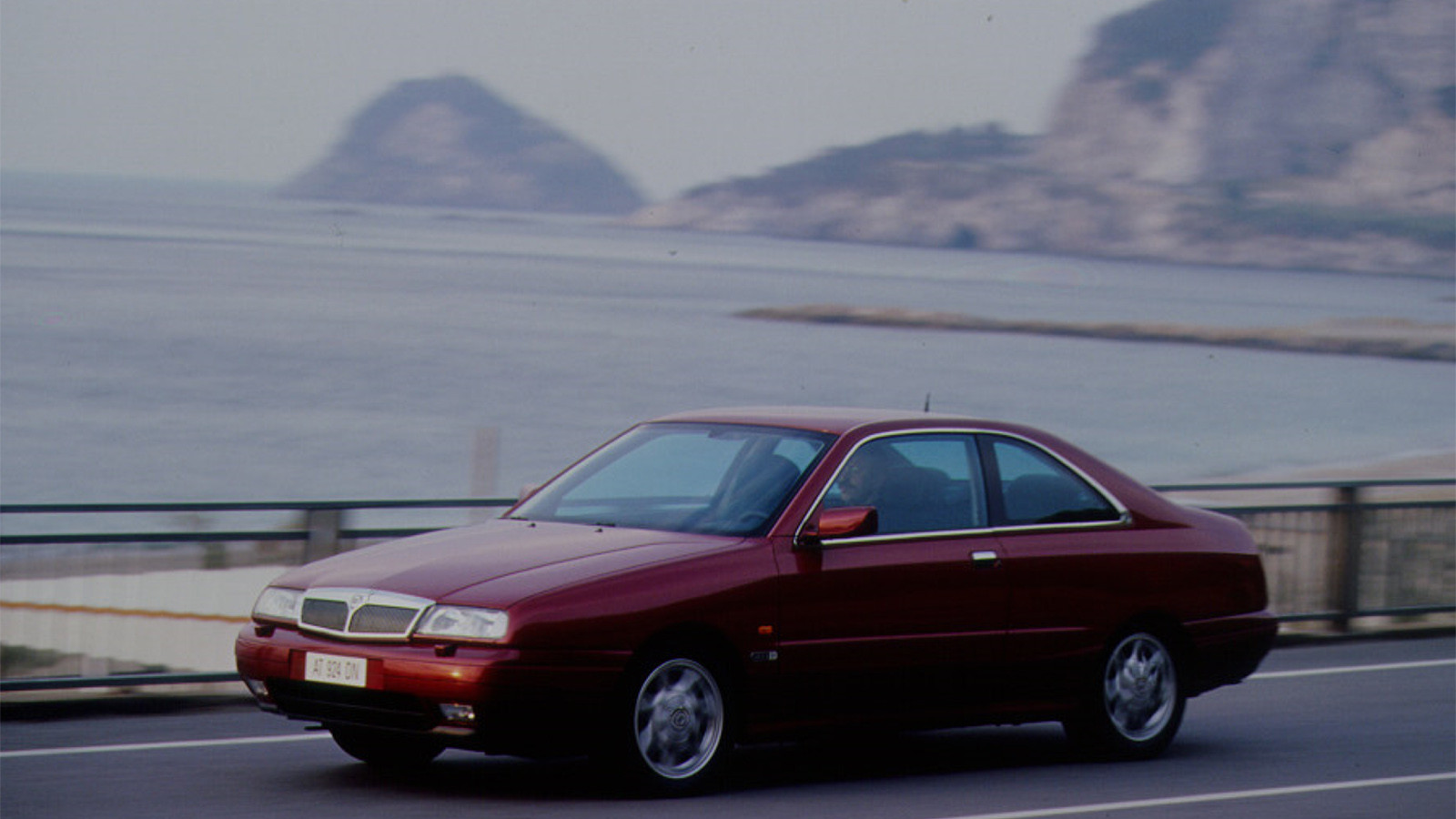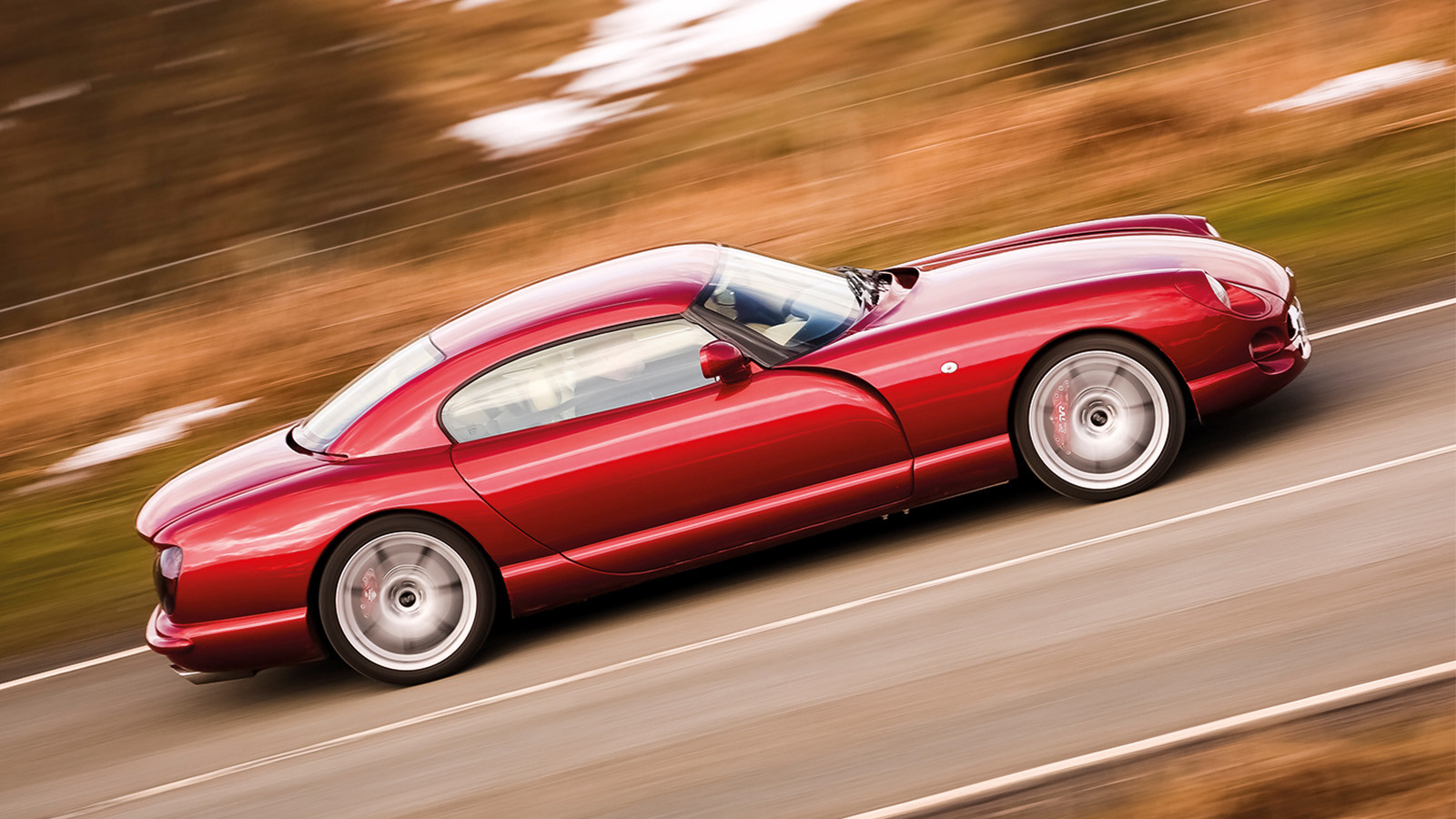-
 © James Mann/Classic & Sports Car
© James Mann/Classic & Sports Car -
 © Luc Lacey/Classic & Sports Car
© Luc Lacey/Classic & Sports Car -
 © Bonhams|Cars
© Bonhams|Cars -
 © Bonhams|Cars
© Bonhams|Cars -
 © Classic & Sports Car
© Classic & Sports Car -
 © James Mann/Classic & Sports Car
© James Mann/Classic & Sports Car -
 © GM Archive
© GM Archive -
 © James Mann/Classic & Sports Car
© James Mann/Classic & Sports Car -
 © Tony Baker/Classic & Sports Car
© Tony Baker/Classic & Sports Car -
 © Vauxhall Heritage
© Vauxhall Heritage -
 © Tony Baker/Classic & Sports Car
© Tony Baker/Classic & Sports Car -
 © Ford
© Ford -
 © Manor Park Classics
© Manor Park Classics -
 © Haymarket Automotive
© Haymarket Automotive -
 © Stellantis
© Stellantis -
 © Tony Baker/Classic & Sports Car
© Tony Baker/Classic & Sports Car -
 © John Bradshaw/Classic & Sports Car
© John Bradshaw/Classic & Sports Car -
 © Stellantis
© Stellantis -
 © Volkswagen UK
© Volkswagen UK -
 © Michelin UK
© Michelin UK -
 © Classic & Sports Car
© Classic & Sports Car -
 © Volkswagen UK
© Volkswagen UK
-
Hellenic heroes
Naming a new car model is more difficult than you would ever imagine.
It can be a legally complex process, fraught with trademarking issues, as fewer and fewer truly original names are available to go around.
Greek names have proved popular throughout automotive history because, first, it’s unlikely any of the gods will sue for copyright.
Such monikers also, for the most part, anyway, imbue a car with a mythical aura that can lift the image of even the most prosaic of four-wheeled chariots.
So here are 21 cars, in chronological order, that have either adopted a Greek name, or adapted one to suit an existing naming convention.
-
1. 1922 Lancia Lambda
As with many examples here, the name ‘Lambda’ – the 11th letter of the Greek alphabet (‘L’) and also the symbol representing wavelength – had no particular relevance to Lancia’s groundbreaking new model, other than setting it apart from rivals at a time when most cars were named by number.
But with its early combination of front-wheel drive, a V-configuration engine and a monocoque chassis, the Lambda is now regarded as something of a mythical motor, its technology light years ahead of the competition.
-
2. 1939 Mercury 8
Granted, this one is a little tenuous, since Mercury is of Roman origin, but was also worshipped by the ancient Greeks as Hermes, the swift messenger to all the gods.
This is also the only name in our set referring to a brand, rather than a model.
Mercury represented Ford’s premium offering. Its first model, the 8, sat between the Ford V8 and Lincoln Zephyr 12 when it was introduced in 1939.
Costing $916 and equipped with a 95bhp V8 engine, the Mercury 8 promised superior power, handling and refinement than its Blue Oval sibling.
Forming part of Ford’s Lincoln-Mercury division from 1945, the Mercury brand was phased out in 2011.
-
3. 1965 Citroën DS21 Pallas
Named after Pallas Athena, the goddess of wisdom – often portrayed brandishing (pallô meaning ‘to brandish’) a sword – the Pallas model was added to Citroën’s DS range in 1965.
A decade earlier, the DS19 had been launched at the Paris motor show to rapturous reception, with 80,000 people placing orders for the revolutionary new model during the course of the event.
It looked like no other car and drove like no other, too, with its clever hydropneumatic/independent suspension, front inboard disc brakes and futuristic design.
The range-topping Pallas model added more luxurious (and optional leather) upholstery, a height-adjustable driver’s seat and a raft of external trim flourishes.
-
4. 1966 Lotus Europa
Europa, a Phoenician princess and mother of King Minos of Crete, may well have been celebrated in the naming of an entire continent.
So perhaps it was apt that Lotus chief Colin Chapman decided to pinch her moniker for a new car that was to drive his overseas sales ambitions.
The Lotus Europa arrived in 1966, its Formula One-inspired, mid-engined layout then still quite rare in a sports-car market dominated by front-engined rivals.
Using a lightweight, folded and welded backbone chassis topped with a two-seater body moulded in glassfibre, it mattered little that the Europa’s power derived from meagre-capacity 1.5- to 1.6-litre engines, when its kerbweight was a piffling 610-710kg (1345-1565lb).
-
5. 1972 Lancia Beta
Another Lancia Greek-letter model, this time representing the second character in the Greek alphabet, the Beta range was introduced in 1972 and grew to include a fastback saloon, coupé, estate, spider and even a mid-engined sports car (the Monte-Carlo).
It was Lancia’s first range launched under Fiat ownership, and all Betas came with double-overhead-cam engines, from 1.3 to 2 litres in capacity, five-speed gearboxes, all-independent suspension and disc brakes all round.
From the early ’80s, Volumex derivatives were introduced with Roots-type superchargers.
Alas, first-series cars were badly prone to rust, resulting in many in the UK being bought back under warranty.
-
6. 1973 Buick Apollo
Apollo was quite a talented fellow. He was one of the 12 Olympian deities, and was the Greek god of archery, music and dance, truth and prophecy, as well as many other just causes.
So you may wonder why the name of this mythical being was employed for a GM compact car that, as it turned out, was only built for three years in the mid-’70s.
Based on General Motors’ X platform, the 1973 Buick Apollo was available as a coupé, a two-door hatch or a four-door saloon, each powered by the choice of either a 4.1-litre ‘six’ or 5.7-litre V8, delivering drive to the rear axle via a three-speed manual, or optional three-speed automatic gearbox.
-
7. 1976 Lancia Gamma coupé
Taking its name from the third letter of the Greek alphabet, the Gamma coupé was the pinnacle of Lancia’s range when it launched in 1976.
Designed by Pininfarina, the Gamma coupé was, with its streamlined four-door berlina sibling, powered by either a 2-litre (though not in the UK) or 2.5-litre flat-four engine.
The Gamma coupé was also manufactured by Pininfarina and was produced alongside the Ferrari 400.
-
8. 1979 Lancia Delta
The Lancia Delta takes its name from the fourth letter in the Greek alphabet.
This model was based on a Fiat platform used for the Strada/Ritmo, itself derived from the earlier 128.
Along with all-independent MacPherson-strut suspension, the Delta inherited the Strada’s 128-derived overhead-cam engine, displacing either 1.3 or 1.5 litres, with a mild power boost over the Fiat thanks to a twin-choke Weber carburettor, plus a new inlet manifold and exhaust.
-
9. 1980 Vauxhall Astra
The first car here to adapt a Greek name to make it more marketable, the Astra’s moniker derives from ‘Astraeus’, meaning ‘star’.
Initially launched in 1979 as the Opel Kadett in Europe, the near-identical Vauxhall Astra was introduced to the UK market a year later, replacing the aged Viva HC.
Astras were initially built in Opel’s Bochum plant, with manufacturing reverting to Vauxhall’s Ellesmere Port in 1981.
Available as a hatchback, a saloon and an estate, the front-wheel-drive Astra was powered by a new overhead-cam engine of either a 1.3- or 1.6-litre capacity, with a more potent 1.8-litre version used in the sporting GTE model.
-
10. 1984 Citroën CX Athena
This is our second outing for a Greek-inspired Citroën trim name.
‘Athena’ was not only a war goddess personifying excellence in close combat, victory and glory, but also the entry model in the UK’s Citroën CX range.
While the Athena model was added later in the CX’s life, the base car had arrived in 1974, replacing the long-lived DS.
With its advanced features, such as a wind-tunnel-honed body generating a Cd figure of just 0.36, hydropneumatic self-levelling suspension and a novel instrument cluster that did away with column stalks, the CX was named European Car of the Year in 1975.
-
11. 1986 Ford Taurus
In Greek mythology, Taurus was identified with Zeus, who assumed the form of a white bull to abduct Europa, a Phoenician princess, as established earlier.
In Ford parlance, the Taurus was a mid-size family car built in the US between 1986 and 2019.
In its first iteration, the Taurus was a milestone model for Ford, introducing a raft of new features and innovations to market.
But by the late ’90s, sales declined as it took a hit from mid-sized Japanese rivals – production ended in 2006.
In 2007, Ford reintroduced the Taurus badge on a full-size saloon, based on the Volvo-derived D3 platform, with a choice of front- or four-wheel drive.
-
12. 1992 TVR Chimaera
In Greek mythology, Chimaera was a fire-breathing female monster with a lion’s head and a serpent’s tail.
When TVR chief Peter Wheeler picked the name, he certainly captured the essence of his new two-seater sports car when it launched at the Earls Court Motor Show in 1992.
Based around the more hardcore Griffith model’s backbone chassis, the Chimaera also used the Griff’s Rover V8 mechanicals, with capacities ranging from 4 to 5 litres through its life.
Conceived as more of a tourer, the Chimaera used all-independent suspension by unequal-length wishbones with coil-overs.
-
13. 1992 Citroën Xantia
Adapted from the Greek word Xanthos, meaning golden or blond, Xantia was the name Citroën chose for its mid-size fleet challenger that was set to rival Ford’s Mondeo and the Vauxhall/Opel Vectra.
Equipped with Citroën’s famed hydropneumatic suspension from launch, up-spec Xantias also benefited from the Hydractive system, which adapted the performance of the suspension’s spheres to suit prevailing road conditions.
In 1994, the system evolved further, with the top-flight Activa model gaining active anti-roll bars that eliminated body roll through corners.
-
14. 1994 Lancia Kappa
Denoting the 10th letter of the Greek alphabet, Lancia selected Kappa as the name of its Thema replacement in 1994.
Only sold in left-hand-drive markets, the Kappa’s somewhat bland styling never quite matched that of its predecessor.
A front-wheel-drive, five-seat, mid-size saloon or estate, the Kappa was powered by a range of engines including a variety of 2-litre, five-cylinder units (naturally aspirated and blown), a 3-litre V6 and two flavours of 2.4-litre diesel.
-
15. 1996 TVR Cerbera
The third model TVR launched under Peter Wheeler’s management was the Cerbera.
Taking its name from Cerberus, in Greek mythology the hound of Hades, a multi-headed dog that guarded the gates of the underworld to prevent the dead from leaving, Blackpool’s version was no less fearsome.
Weighing a mere 1100kg (2425lb), the Cerbera was TVR’s first hardtop model and its first two-plus-two car, with marginal space for rear passengers.
It was also the first with truly home-spun mechanicals, its Al Melling-designed AJP8 V8 engine produced in-house, and available in either 4.2- or 4.5-litre forms.
-
16. 2000 TVR Typhon
Named after the mythical Greek titans’ younger sibling, the TVR Typhon was the title eventually given to the company’s production car conceived to homologate TVR’s GT1 racer.
Built on a completely bespoke platform, with a lightweight carbonfibre body and aluminium honeycomb floorpan, the Typhon started life as the T400R/T440R, and at one point morphed into a supercharged, 600bhp prototype.
However, only two genuine production Typhons ever left the factory, each of which was powered by a standard c380bhp Speed Six engine from the Tuscan S model.
-
17. 2001 Lancia Thesis
The name Thesis, after the Greek goddess of creation, was taken by Lancia for its 2001 challenger in the full-size executive market.
Based on Lancia’s Diàlogos concept, the Thesis was unveiled at the 2001 Geneva show.
Replacing the Kappa, it targeted the Audi A6 and Mercedes-Benz E-Class, but offered a generous dose of Italian panache in its styling – as well as undercutting the price of its German rivals by up to 15%.
Power came via a range of petrol engines from 2 to 3.2 litres, plus various iterations of its five-cylinder, 2.4-litre diesel unit.
-
18. 2001 Volkswagen Phaeton
In Greek mythology, Phaeton was the son of sun god Helios and water nymph Clymene, but in 19th-century parlance it was a grandiose horse-drawn carriage.
Which is probably more what VW’s chief Ferdinand Piëch had in mind when he named the brand’s super-saloon.
Conceived as a rebuff to Mercedes-Benz and BMW, who were encroaching on VW’s turf at the lower end of the market, the Phaeton was a technological tour de force, designed to sit all day at 186mph in 50° heat, while keeping its cosseted occupants at a constant 22°.
Its range of engines was topped by VW Group’s new 6-litre W12, which, in twin-turbocharged form, also went on to power the Bentley Continental GT.
-
19. 2005 Gumpert Apollo
This is the second airing here for the Greek god of archery and music’s name, but this time for something slightly more exotic.
Roland Gumpert came up with the concept of a racing car for the road, and the Apollo was the only model ever produced at Gumpert’s German factory, before he filed for bankruptcy in 2013.
A classic two-seat, mid-engined hypercar, the Gumpert Apollo wore either a glassfibre or carbonfibre body and weighed as little as 1100kg (2425lb).
Its Audi V8 engine produced not far off 800bhp and could fire the Apollo up to a claimed top speed of 224mph.
-
20. 2005 TVR Sagaris
TVR’s Peter Wheeler was clearly on a roll with Greek monikers when he took sagaris, the name for a lightweight battle axe used by the Scythians, for his last model before selling the company.
Originally previewed at the MPH motor show in 2003, the TVR Sagaris was designed with endurance racing in mind, with no modifications required for cooling and ventilation on a race track.
Built around a tubular-steel chassis, and clothed in a compact two-seat glassfibre body, the Sagaris inherited TVR’s 4-litre Speed Six engine from the Tuscan.
-
21. 2006 Volkswagen Eos
Given this VW’s open-top capability, it’s apt that it was named after the sister of the Greek sun god Helios and moon goddess Selene.
The Golf Mk5-based Volkswagen Eos stood alone in the market as the only retractable-hardtop coupé whose five-piece folding roof came with an integrated and independently sliding sunroof.
All models were front-wheel drive, and powered by a range of transversely mounted engines, ranging from 1.4 to 3.6 litres.
We hope you enjoyed this gallery. Please click the ‘Follow’ button above for more super stories from Classic & Sports Car.
